Aosta (Italy) – the most detailed information about the city with photos. The main attractions of Aosta with descriptions, guides and cards.
Contents
Aosta (Italy)
Aosta is a small town in northwestern Italy, surrounded by picturesque mountain peaks of the Alps. Is the capital of the the smallest and least populated Italian region Valle d’Aosta, which is known for its stunning scenery and magnificent ski resorts. Aosta has an interesting historic center including sights like ancient roman and medieval times that make this small town one of the most charming and authentic places Italy.
- Geography and climate
- Practical information
- Story
- sights
- Video
- Maps and guides
- Comments and reviews
Geography and climate
Aosta is located on the left bank of the Dora-Baltea river 110 km from Turin. The city is located in the foothills of the Alps at an altitude of about 600 meters above sea level. Aosta has a transitional climate from temperate to subtropical, which is characterized by cool winter and warm summer.
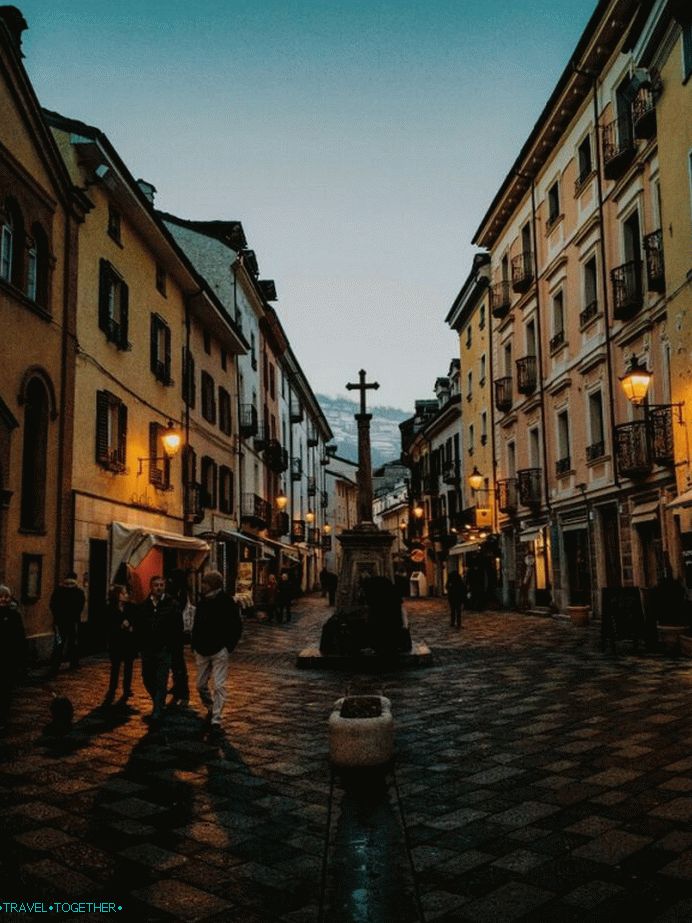 Aosta
Aosta
Valle d’Aosta ski resorts
The Valle d’Aosta region is known for its top-notch skiing. resorts with a wide selection of ski slopes. Overall The length of the ski slopes here is more than 700 km. Main ski resorts: La Thuile, La Rosiere, Pila, Alagna Valsesia, Monte Rosa, Valle d’Ayas, Val di Gressoney (below the peak of Monte Rosa), Valtournenche, Cervinia and, of course, Courmayer.
Valle d’Aosta is the place where some of the highest European mountains such as Mont Blanc (4810 m), Monte Rosa (4634 m), Matterhorn (4478 m) and Gran Paradiso (4061 m). Southern part of this The mountainous area is the national park of Gran Paradiso, which considered one of the most picturesque landscapes of Northern Italy. The region is replete with an extensive network of walking and cycling routes, being one of the coolest places for active holiday in Europe.
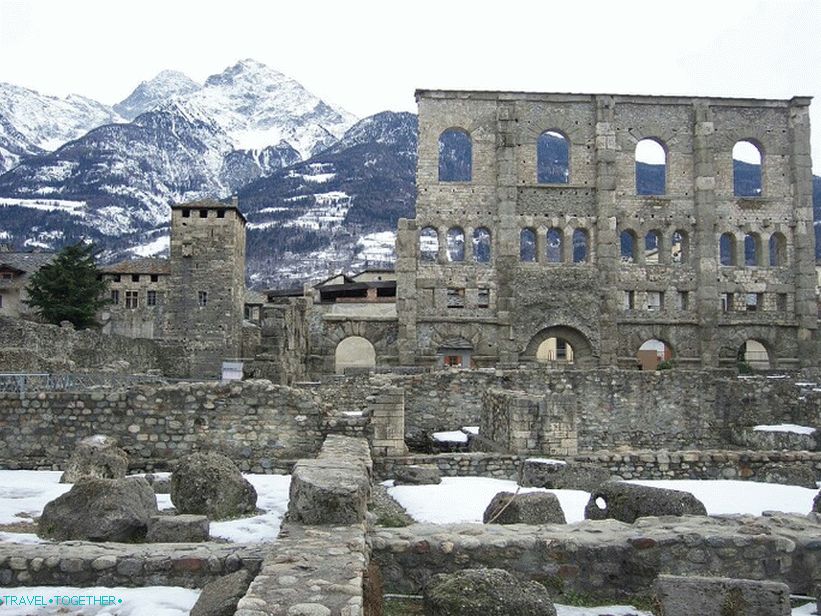 Winter in Valle d’Aosta
Winter in Valle d’Aosta
Practical information
- The population is more than 30 thousand people.
- The area is 21.4 km².
- Language – Italian and French.
- Currency – Euro.
- Visa – Schengen.
- Time – Central European (UTC +1, summer +2).
- Aosta is easily accessible by train from Turin.
- A popular local dish is Carbonnade (beef mince, roasted in red wine). Local delicacies are designated marked Valdostana.
Story
Aosta has an ancient history. The origins of the city go to prehistoric era. In ancient times this place was the center of possessions. Celtic Salass tribe who were a real threat for the Roman legions as they pass through the Large and Small St. Bernard in Gaul and the Rhine Valley. Romans managed to break salassa only in 25 BC After that here was founded new city – Augusta Pretoria Salass.
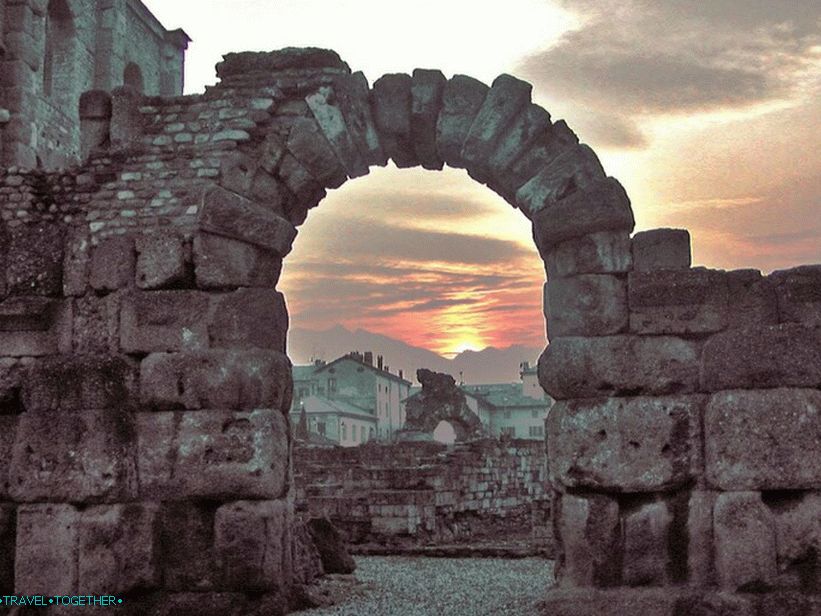 Roman ruins
Roman ruins
In 12 BC. er the Romans built the Gallic Road, which became the key to prosperity of Aosta. After the fall Roman empires (at the beginning of the 6th century) were captured by ostrogoths. Then Aosta belonged to the Lombards and the Franks. In the 9th century the city became part of the Italian kingdom. After its collapse the region Valle d’Aosta belonged to Burgundy. In 1032 the valley took possession House of Savoy, which ruled it until 1870.
Valle d’Aosta was occupied by the French in 1539–1563 and 1800-1814 years.
sights
Roman heritage
Aorta has some great attractions. the ancient period, among which stands out the Roman bridge, Triumphal Arch, Roman Theater, Forum Fragments and Urban Porta Pretoria Gate.
 Arch of Augustus
Arch of Augustus
The Arch of Augustus is a well-preserved ancient building, built in the 1st century BC commemorating the victory of the roman legions over the salassas. Ten can be distinguished in the structure of the arch Corinthian columns and the Doric Order. In the Middle Ages it construction began to be called Saint-Voigt (in French “Holy Arch”).
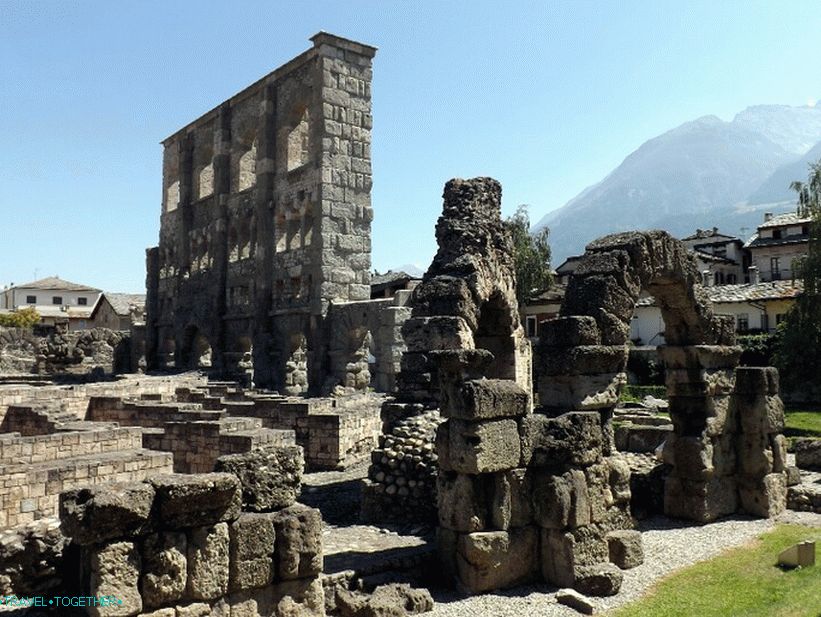 Roman theater
Roman theater
Roman theater is one of the most significant. sights of the period of the Roman Empire in the northwest Italy. This structure dates back to the 1st century AD. and it was built a few decades after the founding of the Roman city (25 BC.). During the reign of Emperor Claudius was also built amphitheater. The theater was built near the ancient city walls and had the area is 81 x 64 m. The capacity of this building was 3,500 – 4,000 spectators. Until our time, only the southern facade has been preserved. Also during the archaeological excavations, ruins were discovered near Market, temple and term.
 Pont de Pierre
Pont de Pierre
Pont de Pierre is a single-arch stone bridge built between 30 BC – 14 AD
 Porta pretoria
Porta pretoria
Porta Pretoria – the ancient city gates that were The eastern entrance to the Roman city. Dated 25 year BC and all still in excellent condition. The gates were built from stone blocks and consist of two rows of arches – one central and two minor (side). The central arch was intended for passage of carts.
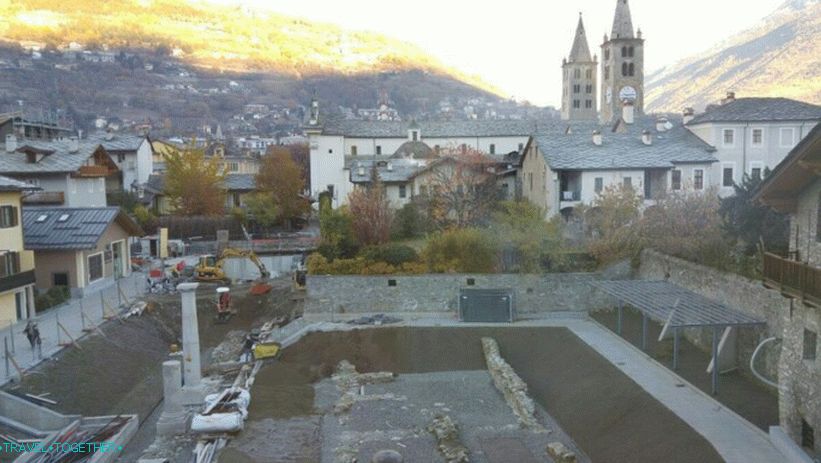 Forum
Forum
The Forum is the heart of the Roman city, as well as its economic, shopping and religious center. The Roman Forum was a large and lively space consisting of public the square on which the market was located, and two twin temples in northern part.
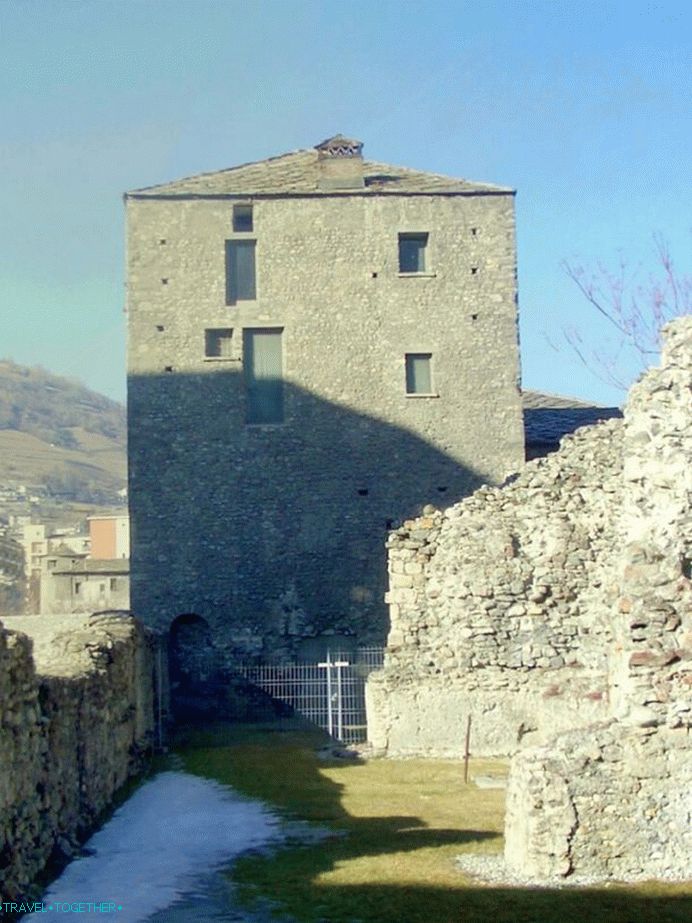 Cheese tower
Cheese tower
Cheese Tower (Tour Fromage) – the oldest of these structures in Aosta, which dates from the 1st century AD.
On the outskirts of the historic center you can look at other ancient towers and remains of old walls.
Aosta Towers
 The Tower of the Leper
The Tower of the Leper
- The Tower of the Leper (Torre del Lebbroso) – built in the middle century on the foundation of the Roman shaft. In the 17th century it was locked sore leprosy, after which the tower got modern title.
- New Tower (Tour Neuve) – built in the 13th century on the Roman the foundations.
- Tour du Pailleron – a medieval tower that has preserved original historical look.
- Torre o Castello di Bramafan – castle tower built in 11 century near the ruins of the Roman fortress. The castle was residence of the Viscounts of the House of Savoy.
- Tour du Baillage – a medieval tower that served prison function.
- La Tour des Seigneurs is a beautiful old tower in which The Aosta tourist office is now located.
Sacred architecture
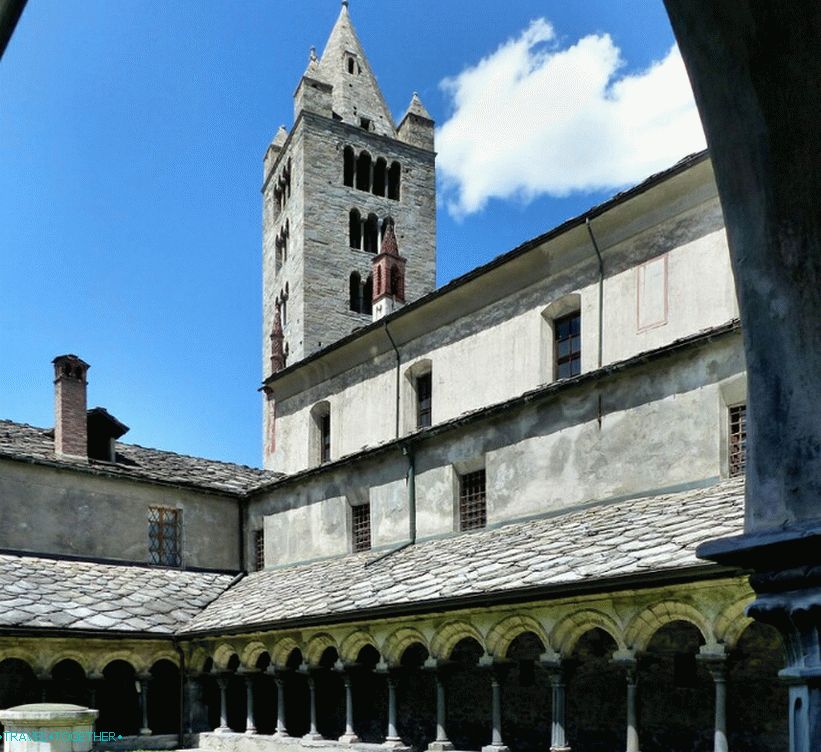 Sant’Orso
Sant’Orso
Sant’Orso is a medieval monastery that includes the church of San Lorenzo, founded in the fifth century, the Romanesque monastery and old chapel with frescoes.
 Duomo
Duomo
Duomo – the cathedral, which was built in the 11th century. Although in its structure you can see the remains of an older church 4 centuries and roman ruins in a crypt. Inside the cathedral are beautiful murals and mosaic floor.






